2013 NCAA SeasonFeb 18, 2013 by The GymShark
Lloimincia's Floor Routine: Love It or Hate It?
Lloimincia's Floor Routine: Love It or Hate It?
Lloimincia's Floor Routine: Love It or Hate It?

In the world of gymnastics – as in most sports – few things are as controversial and divisive as something that doesn’t adhere to the status quo.
In football, the shotgun formation was once mocked and labeled a gimmick.
In basketball, the old ABA league established a rule which critics scorned and believed would never catch on: the three-point field goal arc.
If that wasn’t bad enough, in 1973 baseball’s American League adopted a concept which threatened the very fiber of our human existence: the designated hitter.
And now a new threat to humanity, and indeed the entire galaxy, has emerged: Lloimincia Hall’s floor routine.
Yes, that’s right. Lloimincia Hall’s floor routine is a threat to the entire galaxy… well, the galaxy of women’s college gymnastics anyway.

(c) GymShark
The Rub and The Skinny
The arguments for and against Lloimincia Hall’s floor routine stems from the larger debate between schools of thought: classical purists versus modernists, sacred versus secular, and so forth. The same opposing viewpoints extend to musical arts or anything that is valued in whole or in part by the perception of its artistry.
In the modern age of gymnastics, choreographed routines have leveraged heavily from ballet. The earliest champions in women’s gymnastics usually studied ballet for many years even before entering the sport*.
When one speaks of elegance and artistry in gymnastics, the foundation of that viewpoint is ballet. Nastia Liukin was not considered artistic because her technique looked like something out of a rap video. She was considered artistic because she looked like a ballerina.

From the 1970’s to the present time, increasingly difficult tricks began to usurp elegance in the code of points. Skinnier, smaller, and younger gymnasts dominate the sport. In the prime of their careers, Olga Korbut, Nadia Comaneci, and Kerri Strug could probably all fit in one Altoids tin.
Many gymnastics fans have grown up believing this is how the sport is supposed to be: very petite body types performing acrobatic skills and dance elements with ballet as the foundational technique, and indeed to a large degree that IS gymnastics.
Over the years, however, the successes of athletes with diverse body types and choreographers with contemporary dance training have influenced the sport. Nowhere is this more evident than in women’s collegiate gymnastics; and in no event is it more evident than in the floor exercise.
The floor exercise in women’s college gymnastics is an oasis of individuality and therein lays the rub. With an increase in the diversity of body types, musical tastes, and dance styles, the definitions of “artistry”, “entertainment”, and the expression of one’s personality have necessarily stretched – to the delight of some and the chagrin of others.

Her Side of the Story
Loimincia Hall’s floor exercise routine for the LSU Tigers is her expression of her personality.
“My inspiration for the choreography was Christ. I begin my floor routine by putting both hands up to Christ to say without him it would not be possible for me to even be out on the floor”, says Lloimincia.
When asked about her floor music, Lloimincia says, “Throughout my floor routine its songs from very popular African-American gospel groups Herb Franklin and Mary, Mary. I love their inspiration, I love their message and that’s what I want to represent to the world and minister that [Christ] is what its all about; I’m all about Christ and Christ is the main reason that I’m even here.”
Regarding the most common criticism of her floor routine, that it isn’t rooted in the classical-style of music and ballet, she says, “No its not classical, but If anybody knows Lloimincia Hall, I’m not classical. I didn’t get to where I am by doing ballet. So therefore, I do what I can do, and what God has led me to do, and I represent it the best that I can.”
Her floor coach, former LSU gymnast and national champion, Ashley Claire-Kearney, says, “People either love that routine or they hate it. Everyone is entitled to their own opinion and I’m perfectly fine with that and Lloimincia is as well. I know gymnastics people think it should be ballet and its about artistry – and it absolutely is – but artistry doesn’t necessarily mean ballet, and this isn’t ballet – this is gymnastics.
Claire-Kearney says, “[Lloimincia] is not a ballet dancer, that’s just not who she is… I think its great if you have a lineup full of different personalities, different styles of music and different types of dancers, and you can bring it all together, and I think that’s one of the things that makes our lineup so strong.”

A Prism Has Many Colors
Classical ballet as we know it originates from Italy, France, Russia – but it is not the only form of dance and European countries are not the only countries in the world that have developed dance styles. There are styles of dance that originate from Africa, from the Caribbean, from Asia, from Latin-America, and even the streets of American communities. Ballet itself has different genres.
Gymnastics that incorporates dance elements from styles other than ballet are simply different, not wrong.
If the NCAA wants to reign in the styles of dance elements and types of music that can be used in a floor routine, then the code of points should be updated. In the absence of these restrictions, the athletes are entitled to let their creativity and their personalities flourish.
Maybe it is time to acknowledge and accept all the colors of the prism, and not just one.
What do you think? Chime in and let us know!
*from Wikipedia article – Women’s Artistic Gymnastics
Related Content
 Replay: Lander vs Mars Hill | Mar 28 @ 6 PM
Replay: Lander vs Mars Hill | Mar 28 @ 6 PMMar 29, 2024
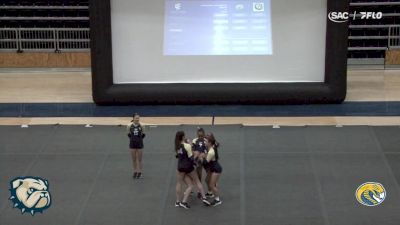 Replay: Coker vs Wingate | Mar 21 @ 6 PM
Replay: Coker vs Wingate | Mar 21 @ 6 PMMar 22, 2024
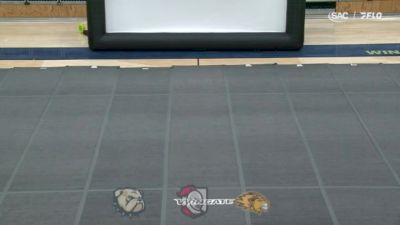 Replay: Wingate Tri-Meet - Acrobatics & Tumbling | Mar 15 @ 5 PM
Replay: Wingate Tri-Meet - Acrobatics & Tumbling | Mar 15 @ 5 PMMar 15, 2024
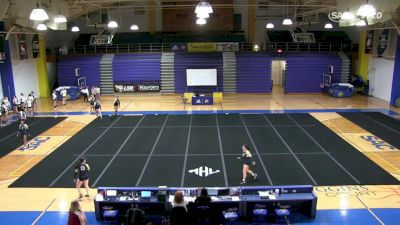 Replay: Mars Hill Tri-Meet | Feb 16 @ 6 PM
Replay: Mars Hill Tri-Meet | Feb 16 @ 6 PMFeb 17, 2024
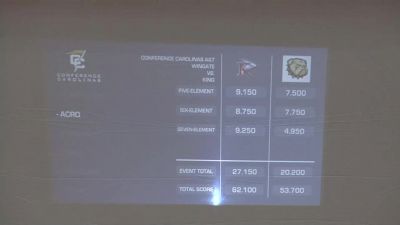 Replay: King (TN) vs Wingate - 2024 2024 King (TN) vs Wingate - Acrobatics & Tumbling | Feb 10 @ 4 PM
Replay: King (TN) vs Wingate - 2024 2024 King (TN) vs Wingate - Acrobatics & Tumbling | Feb 10 @ 4 PMFeb 10, 2024
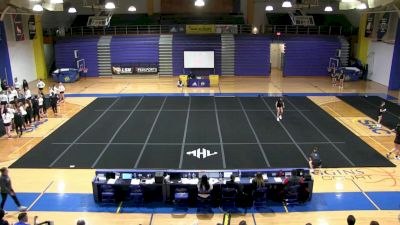 Replay: Belmont Abbey vs Mars Hill | Feb 10 @ 3 PM
Replay: Belmont Abbey vs Mars Hill | Feb 10 @ 3 PMFeb 10, 2024
 How to Watch: 2024 King (TN) vs Wingate - Acrobatics & Tumbling | Gymnastics
How to Watch: 2024 King (TN) vs Wingate - Acrobatics & Tumbling | GymnasticsFeb 10, 2024
 How to Watch: 2024 Wingate Tri-Meet | Gymnastics
How to Watch: 2024 Wingate Tri-Meet | GymnasticsFeb 8, 2024
 How to Watch: 2024 Wingate Tri-Meet | Gymnastics
How to Watch: 2024 Wingate Tri-Meet | GymnasticsFeb 8, 2024